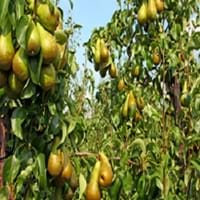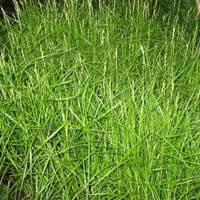Life Span
Perennial
Perennial
Origin
Western Europe
North-Central United States, Canada
Types
Pyrus amygdaliformis, Pyrus armeniacifolia, Pyrus bourgaeana
Not Available
Number of Varieties
Not Available
Habitat
Dappled Shade, Sunny Edge, Woodland Garden Secondary
Moist Soils
USDA Hardiness Zone
5-9
3-8
Sunset Zone
2a, 2b, 3a, 3b, 4, 5, 6, 7, 8, 9, 14, 15, 16, 17, 18
4, 5, 6, 7, 8, 9, 14, 15, 16, 17, 18, 19, 20, 21, 22, 23, 24
Habit
Oval or Rounded
Clump-Forming
Flower Color
Not Available
Gold, Brown
Flower Color Modifier
Bicolor
Bicolor
Fruit Color
Not Available
Non Fruiting Plant
Leaf Color in Spring
Not Available
White, Green
Leaf Color in Summer
Not Available
White, Green
Leaf Color in Fall
Not Available
Yellow
Leaf Color in Winter
Light Green
Not Available
Leaf Shape
Oblong
Acicular
Plant Season
Spring, Fall
Spring, Summer, Fall
Sunlight
Full Sun, Partial Sun
Full Sun, Partial Sun, Partial shade
The pH of Soil
Acidic, Neutral
Acidic, Neutral
Soil Drainage
Well drained
Average
Bloom Time
Spring
Late Spring, Early Summer, Summer
Tolerances
Drought
Drought
Where to Plant?
Ground
Ground
How to Plant?
Seedlings
Bulbs
Plant Maintenance
Medium
Medium
Watering Requirements
Medium
Average Water Needs
In Summer
Lots of watering
Lots of watering
In Spring
Moderate
Moderate
In Winter
Average Water
Average Water
Soil pH
Acidic, Neutral
Acidic, Neutral
Soil Drainage Capacity
Well drained
Average
Sun Exposure
Full Sun, Partial Sun
Full Sun, Partial Sun, Partial shade
Pruning
Remove crossing or rubbing branches, Remove damaged leaves, Remove dead branches, Remove dead leaves, Remove dead or diseased plant parts
Remove damaged leaves, Remove dead branches, Remove dead leaves
Fertilizers
All-Purpose Liquid Fertilizer
All-Purpose Liquid Fertilizer
Pests and Diseases
Red blotch
Red blotch
Plant Tolerance
Drought
Drought
Flowers
Yes
Insignificant
Flower Petal Number
Not Available
Single
Foliage Texture
Not Available
Fine
Foliage Sheen
Not Available
Matte
Attracts
Birds, Not Available
Birds
Allergy
Itchiness, Mouth itching, Pollen, Sore Throat
Not Available
Aesthetic Uses
Not Used For Aesthetic Purpose
Not Used For Aesthetic Purpose
Beauty Benefits
Good for skin and hair
Not Available
Edible Uses
Yes
Insignificant
Environmental Uses
Air purification, Nesting sites for birds, Shadow Tree, Windbreak
Air purification
Medicinal Uses
Analgesic, Diuretic, Heart problems, High cholestrol, Stomach pain, Weight loss
Not Available
Part of Plant Used
Fruits, Wood
Bulbs
Other Uses
Used as a dye, Used for woodware
Not Available
Used As Indoor Plant
No
No
Used As Outdoor Plant
Yes
Yes
Garden Design
Feature Plant, Fruit / Fruit Tree
Bog Garden, Groundcover, Mixed Border, Water Gardens
Botanical Name
PYRUS 'Bosc'
CAREX muskingumensis 'Ice Fountains'
Common Name
Bosc Pear, Pear
Palm Sedge
In Hindi
Bosc Pear Tree
Palm Sedge
In German
Bosc Pear Tree
Palm Sedge
In French
Bosc Pear Tree
Palm Sedge
In Spanish
Bosc Pear Tree
Palm Sedge
In Greek
Bosc Pear Tree
Palm Sedge
In Portuguese
Bosc Pear Tree
Palm Sedge
In Polish
Bosc Pear Tree
Palm Sedge
In Latin
Orbis Bosc ligno
Palm Sedge
Phylum
Magnoliophyta
Magnoliophyta
Class
Magnoliopsida
Lillosida
Family
Rosaceae
Cyperaceae
Clade
Angiosperms, Eudicots, Rosids
Not Available
Tribe
Maleae
Not Available
Subfamily
Amygdaloideae
Not Available
Number of Species
Not Available
Importance of Bosc Pear and Palm Sedge
Want to have the most appropriate plant for your garden? You might want to know the importance of Bosc Pear and Palm Sedge. Basically, these two plants vary in many aspects. Compare Bosc Pear and Palm Sedge as they differ in many characteristics such as their life, care, benefits, facts, etc. Every gardener must at least have the slightest clue about the plants he wants to plant in his garden. Compare their benefits, which differ in many ways like facts and uses. The medicinal use of Bosc Pear is Analgesic, Diuretic, Heart problems, High cholestrol, Stomach pain and Weight loss whereas of Palm Sedge is Not Available. Bosc Pear has beauty benefits as follows: Good for skin and hair while Palm Sedge has beauty benefits as follows: Good for skin and hair.
Compare Facts of Bosc Pear vs Palm Sedge
How to choose the best garden plant for your garden depending upon its facts? Here garden plant comparison will help you to solve this query. Compare the facts of Bosc Pear vs Palm Sedge and know which one to choose. As garden plants have benefits and other uses, allergy is also a major drawback of plants for some people. Allergic reactions of Bosc Pear are Itchiness, Mouth itching, Pollen and Sore Throat whereas of Palm Sedge have Not Available respectively. Having a fruit bearing plant in your garden can be a plus point of your garden. Bosc Pear has showy fruits and Palm Sedge has no showy fruits. Also Bosc Pear is flowering and Palm Sedge is not flowering . You can compare Bosc Pear and Palm Sedge facts and facts of other plants too.





